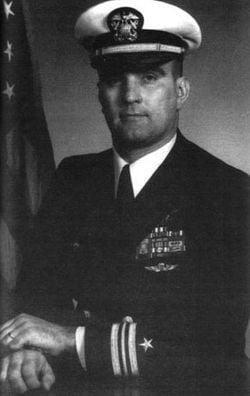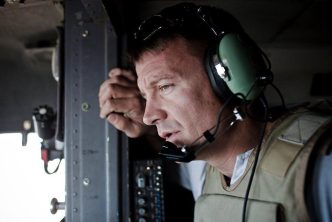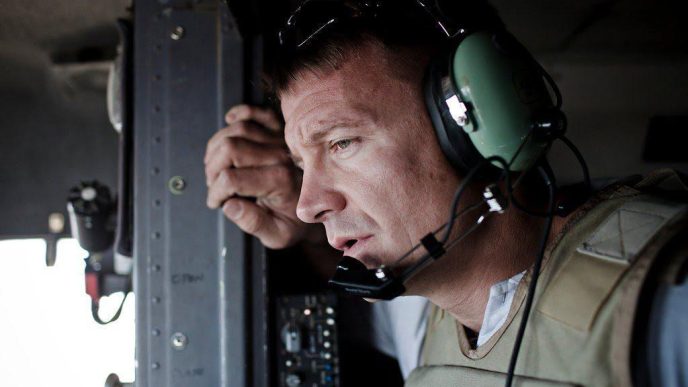The story behind a rogue warrior, Richard Marcinko, nicknamed Demo Dick, who supposedly was the first commanding officer of U.S. Navy SEAL Team 6, is full of intrigues and controversies. Richard Marcinko was born November 21, 1940, and he is a retired U.S. Navy SEAL 6 commander and Vietnam War veteran.
Introduction
Richard Dick Marcinko was the founder and first commanding officer of SEAL Team 6 and Red Cell, a secretive unit designed to test the effectiveness of American tactics or personnel.
The original Red Cell was a 14-man team composed of 13 former SEAL Team 6 and one Force Recon Marine. The unit was also known as OP-O6D, which had been organized to attempt to infiltrate and otherwise test the security of U.S. military bases and other installations sensitive to U.S. security interests.
Early Life And Education
Richard Marcinko was born in Lansford, Pennsylvania, of Slovak descent.
After attending Admiral Farragut Academy in Toms River, New Jersey, he enlisted in the U.S. Navy in 1958. He worked as a teletype operator at the Naval Air Station in Naples, Italy, but after some difficulty, he eventually worked his way into the Navy’s Underwater Demolition Teams.

The majority of his assignments were in direct combat roles or crisis management positions in direct support of the National Command Authority, which collectively refers to the President of the United States and the Secretary of Defense.
Combat engagements
Vietnam – first part
On May 18, 1967, Marcinko led his team in an assault on Ilo Ilo Hon (Ilo Ilo Island), where they killed a large number of Vietcong and destroyed six of their sampans.
* A flat bottom Asian skiff usually propelled by two oars.
The U.S. Navy called this action “The most successful SEAL operation in the Mekong Delta,” and for long, it was a synonym for the successful operation of that type. Richard Marcinko was awarded the first of his four Bronze Stars and a Vietnamese Cross of Gallantry with a Silver Star for leading it.
Vietnam – part two
Richard Marcinko returned to Vietnam with SEAL Team 2 after a few months of stateside as Officer-in-Charge of Eighth Platoon.
Dick Marcinko ordered his platoon to assist U.S. Army Special Forces at Chau Doc during the Tet Offensive. What began as an urban street battle turned into a rescue mission of American nurses and a schoolteacher trapped in the city’s church and hospital. After completing his second tour in Vietnam and a two-year stateside staff assignment, Marcinko was promoted to Lieutenant Commander.
Cambodia
In 1973 he reported for duty as a Naval Attaché to Cambodia, where he spent fourteen months advising and actively assisting the Cambodians in their fight with the Khmer Rouge. Dick left Cambodia in 1975 and became the commanding officer of SEAL Team 2.
From SEAL Team 2, he attended the USAF Air Command & Staff College in Montgomery, Alabama, and earned an M.A. in Political Science from Auburn University. He was then stationed at the Pentagon, where he served as a special operations planner assigned to the Joint Chiefs of Staff.
The Origin OF The Name “SEAL Team 6”.
During the Iran Hostage Crisis in 1979, Marcinko was one of two Navy representatives for a Joint Chiefs of Staff task force known as the TAT (Terrorist Action Team). The purpose of the TAT was to develop a plan to free the American hostages held in Iran, which culminated in Operation Eagle Claw.
Operation Eagle Claw (or Operation Evening Light or Operation Rice Bowl) was an American military operation ordered by U.S. President Jimmy Carter to attempt to end the Iran hostage crisis by rescuing 52 Americans held captive at the U.S. Embassy in Tehran on April 24, 1980. Its failure, and the humiliating public debacle that ensued, damaged American prestige worldwide.
In the wake of the Eagle Claw failure, the Navy saw the need for a full-time dedicated counter-terrorist team and tasked Marcinko with its design and development.

Dick Marcinko was the first commanding officer of this new unit. Although the Navy only had two SEAL teams, Marcinko named the unit SEAL Team Six to confuse other nations, specifically the Soviet Union, into believing that the United States had three other SEAL teams that they were unaware of!
He selected the unit’s members from across the U.S. Navy’s special operations community, including a special counter-terrorism tactics section of SEAL Team Two, codenamed MOB-6.
SEAL Team 6 would later become the Navy’s premier counter-terrorist unit, similar to its Army counterpart, Delta Force.
While typically a two-year command in the Navy, Marcinko commanded SEAL Team 6 for three years, from August 1980 to July 1983.
Red Cell – a secretive unit for infiltration of supposedly secure facilities
After relinquishing command of SEAL Team SIX, Marcinko was tasked by Vice Admiral James “Ace” Lyons, Deputy Chief of Naval Operations, with the design of a unit to test the Navy’s vulnerability to terrorism.
The Naval Security Coordination Team OP-06D unit was unofficially named Red Cell. In 1984, Red Cell had 13 men from SEAL Team 6 (Marcinko and twelve other hand-picked by himself) and one from Marine Force Recon.
Marcinko’s team then tested the security of naval bases, nuclear submarines, ships, civilian airports, and an American embassy. And under Marcinko’s leadership, the team was able to infiltrate seemingly impenetrable, highly secured bases, nuclear submarines, ships, and other purported “secure areas” such as Air Force One, and then disappear without incident.
These actions indicated that the cause of such a vulnerable military resulted from the replacement of Marine and Naval Military Police by contracted private security agencies often staffed by retired military personnel.
Richard Marcinko’s Retirement And Prison
Commander Marcinko retired from the Navy on February 1, 1989, with thirty years, three months, and seventeen days of enlisted and commissioned active duty service.
But in 1990, Dick Marcinko was sentenced to prison for twenty-one months and fined $10,000 for his role in a mission that exposed security lapses at sensitive military installations and served 15 months of the sentence! Marcinko still claims his innocence and often states that the Navy singled him out because the higher-ranking officials were embarrassed.
Civilian career
Marcinko has written multiple best-selling novels, including Rogue Warrior. He has written numerous books on management and leadership techniques, professional lectures to law enforcement and business executives, and dynamic hands-on training for U.S. and foreign hostage rescue teams. He is the CEO of a private security firm known as Red Cell, based in Washington, D.C.
He has his talk show called America on Watch with Richard Marcinko. Marcinko even acts as a cooperate adviser occasionally for companies like At&t, Motorola, and General Motors. He speaks on cooperate security team building, strategic planning, and operational management.













In July 1987, I had the honor of being interviewed as a candidate for Red Cell. At that time, Red Cell was operated out of a classified location in Maryland. I had served the prior four years as the U.S. Navy NCOIC of the Intelligence Division, U.S. Navy Special Operations Command, Atlantic, Ft. Bragg, NC, as well as the US Navy Representative to the Military Advisory Group, US Army Special Operations Command, Ft. Bragg. I have never, to this day, seen a more equipped and high-tech counterterrorism team. What Commander Marcinko built was something to behold. The United States owes a debt of gratitude to the tremendous accomplishments made in the security of our Nation to Commander Marcinko.
Ghost unit
One of the greatest warriors, I ever had the honor to meet. Godspeed Sir!